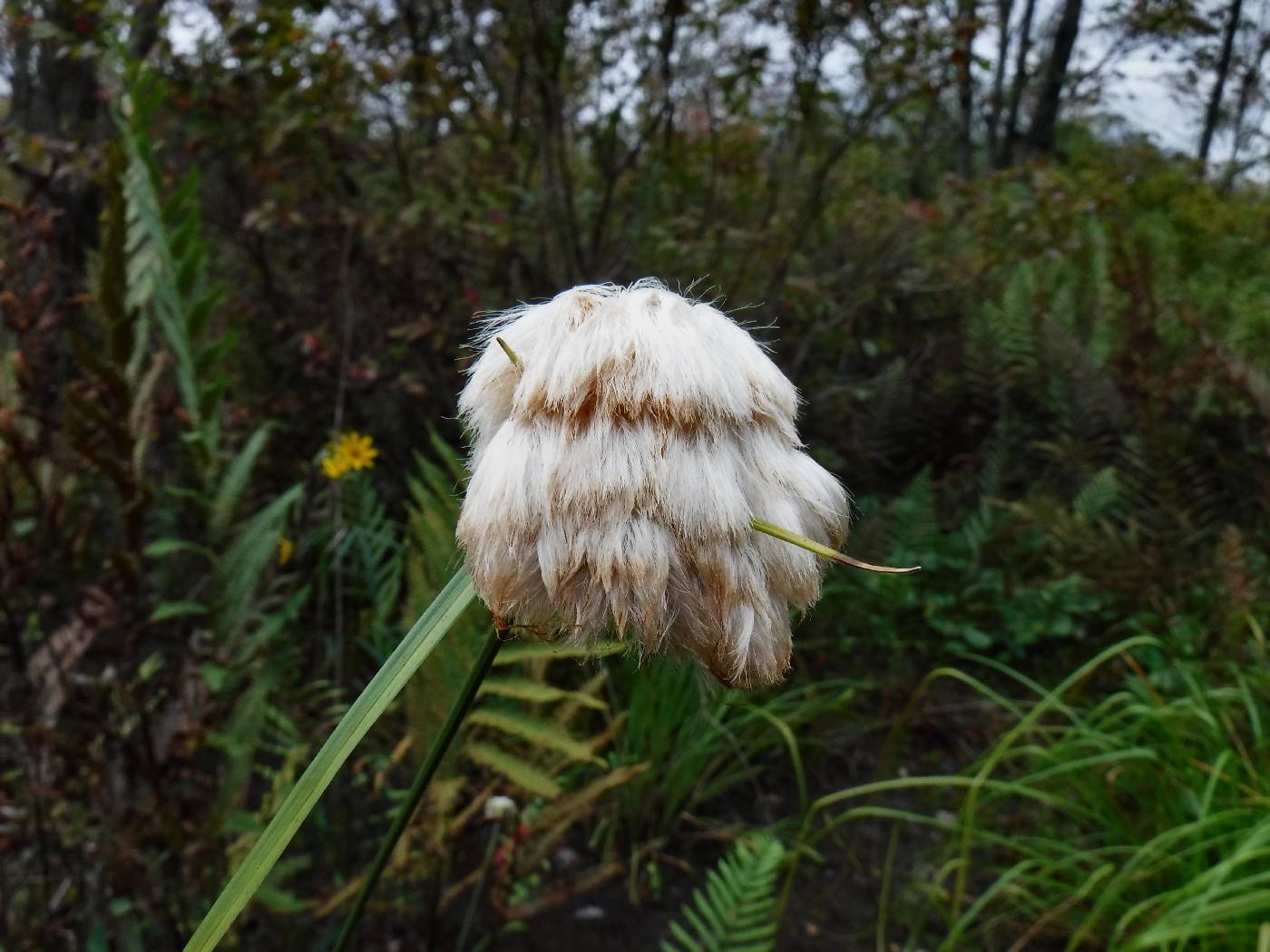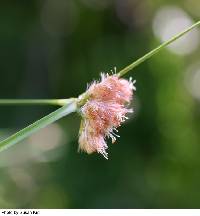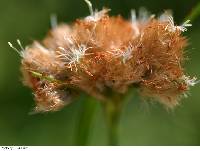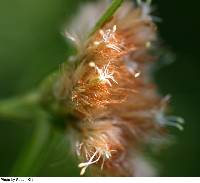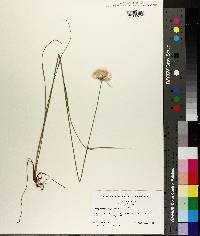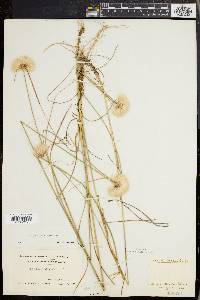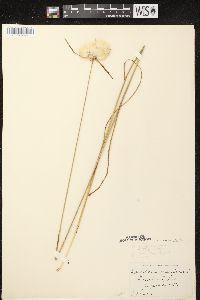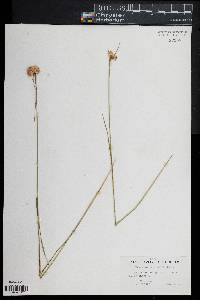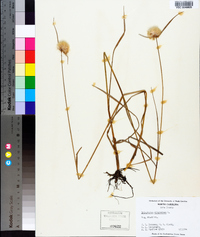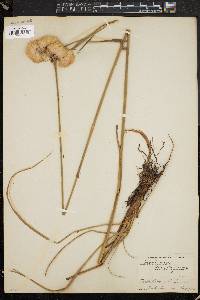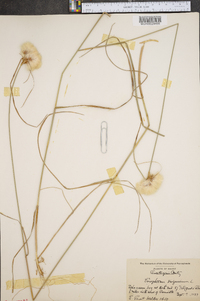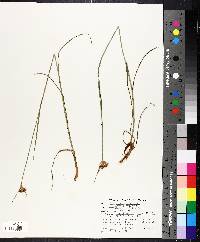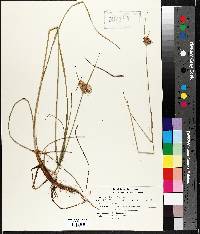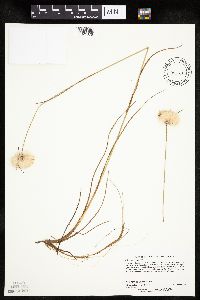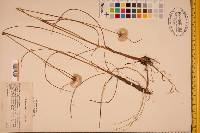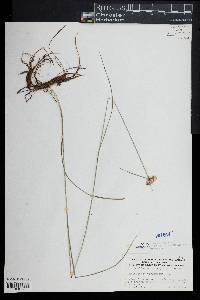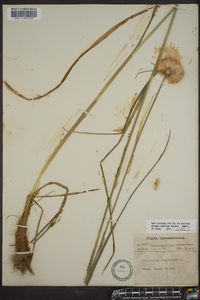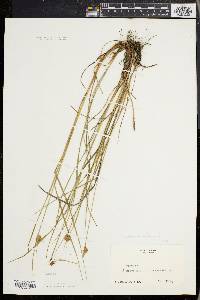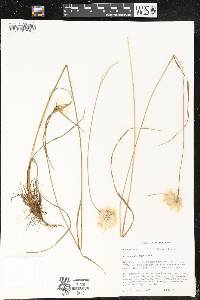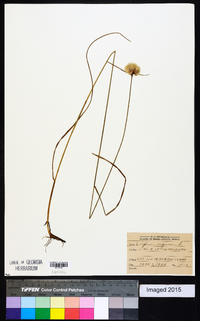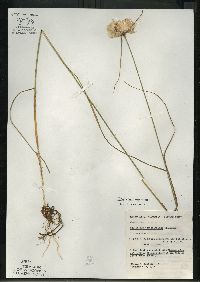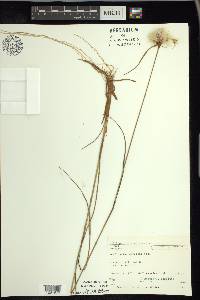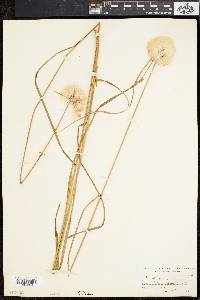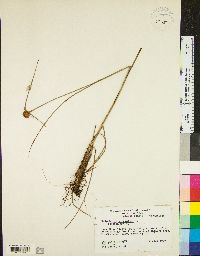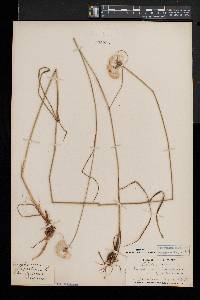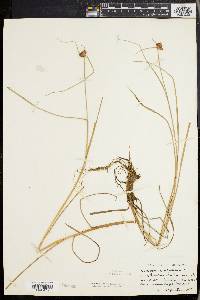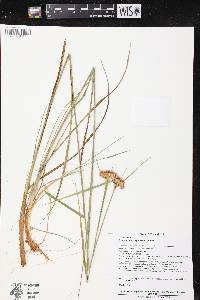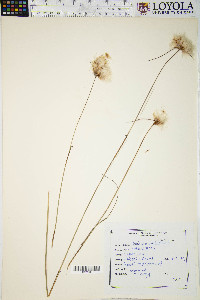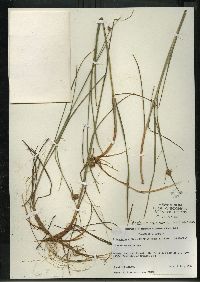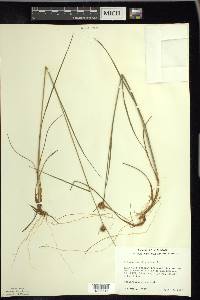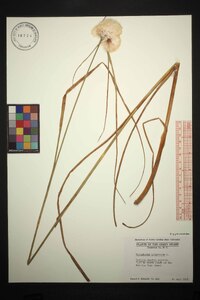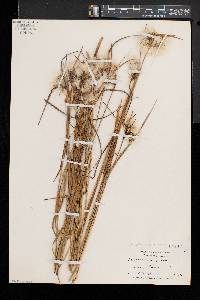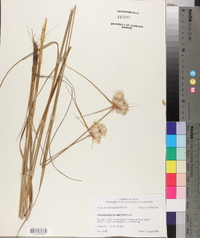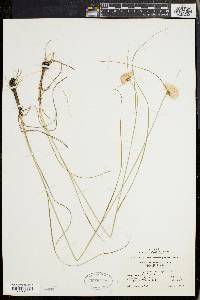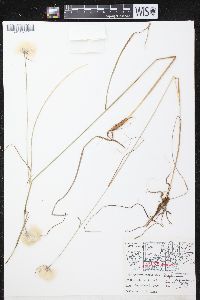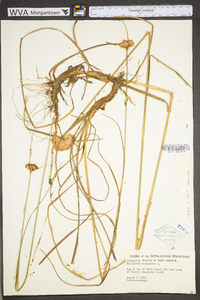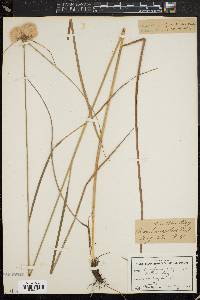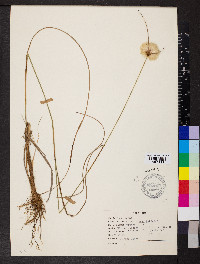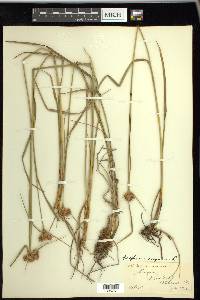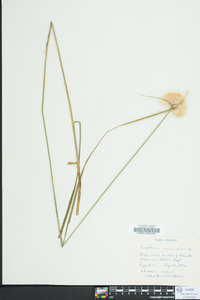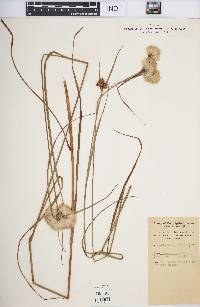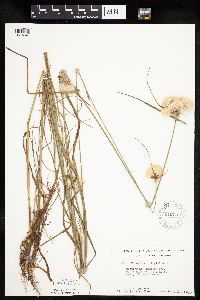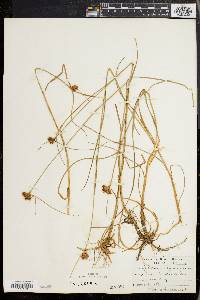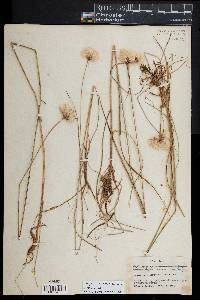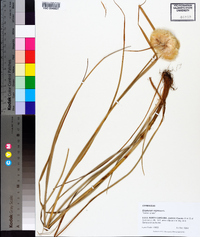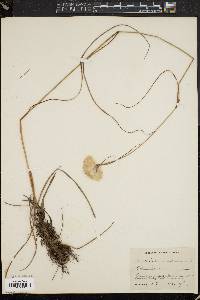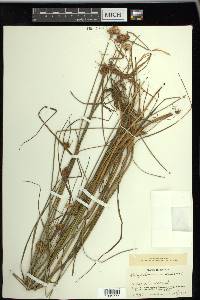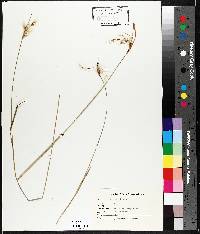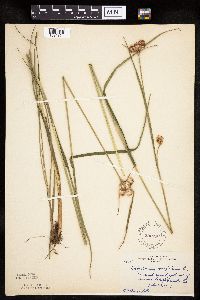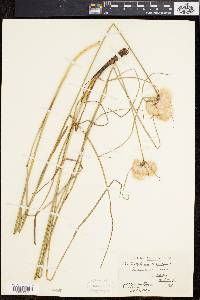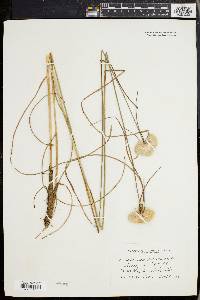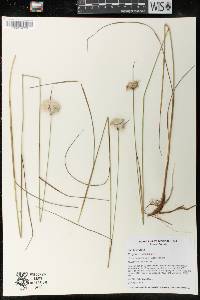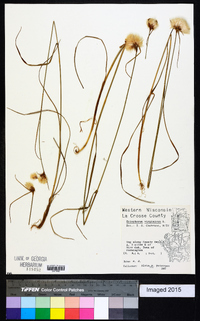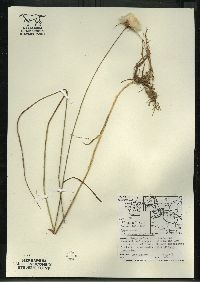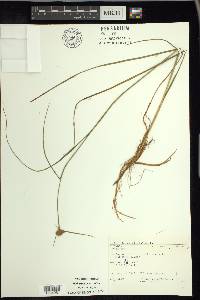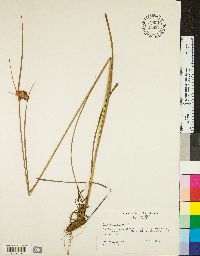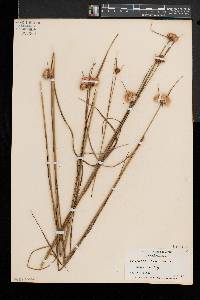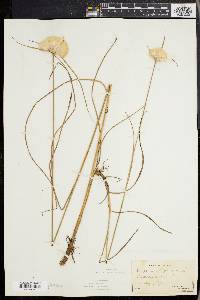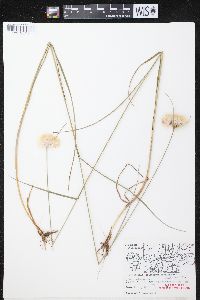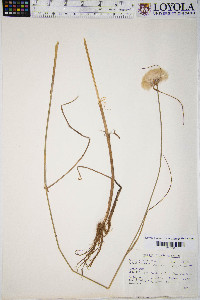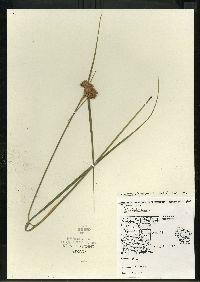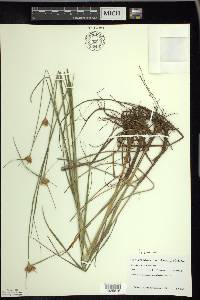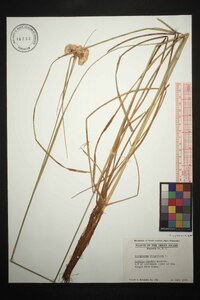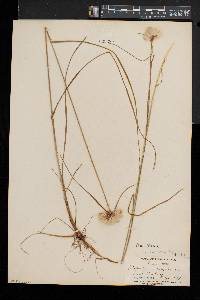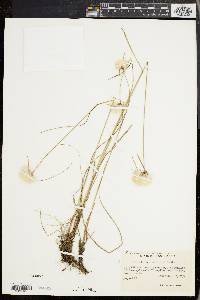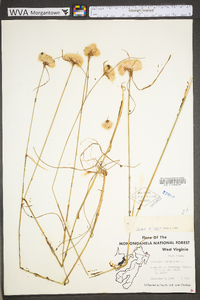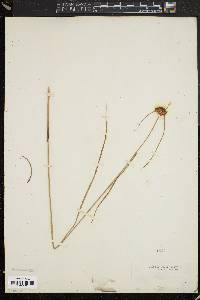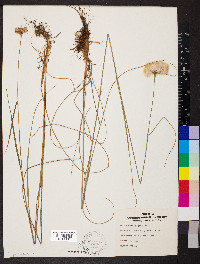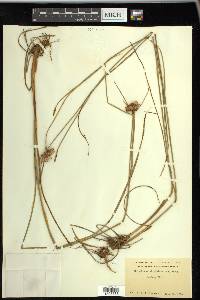Eriophorum virginicum
|
|
|
|
Family: Cyperaceae
Tawny Cotton-Grass, more...tawny cottongrass
[Eriophorum virginianum Houtt., moreEriophorum virginicum f. album (A.Gray) Wiegand, Eriophorum virginicum var. album A.Gray] |
Plants colonial from long-creeping rhizomes. Culms 40-120 cm × 0.6-1 mm, smooth or scabrous distally. Leaves: blades flat, trigonous in cross section distally, to 30 cm × 1.5-4 mm; distal leaf blade much longer than sheath. Inflorescences: blade-bearing involucral bracts 2-5, sometimes brown-tinged proximally, leaflike, longest 4-12 cm. Spikelets 2-10, usually in dense head, ovoid, 6-10 mm in flower, 10-20 mm in fruit; peduncles 2-10(-20) mm, scabrid; scales brown, often with green center, ovate-oblong, 4-5 mm, obscurely ribbed or with 3-5 equally prominent ribs, apex obtuse. Flowers: perianth bristles usually 10 or more, brown at least at base, rarely entirely white, 12-18 mm, smooth; anthers 0.7-1.5 mm. Achenes dark brown to black, narrowly obovoid or ellipsoid, 2.5-4 mm. Fruiting mid summer-early fall. Bogs, meadows; 0-1000 m; St. Pierre and Miquelon; N.B., Nfld. and Labr., N.S., Ont., P.E.I., Que.; Conn., D.C., Ill., Ind., Maine, Md., Mass., Mich., Minn., N.H., N.J., N.Y., N.C., Ohio, Pa., R.I., S.C., Tenn., Vt., Va., W.Va., Wis. Perennial herb with long-creeping rhizomes, colonial 40 cm - 1 m tall Leaves: alternate, to 30 cm long, 1.5 - 4 mm wide, flat with a three-angled tip, linear, parallel-veined, with a sheathing base that encloses the stem. The upper leaf blade is much longer than its sheath. Inflorescence: a terminal, dense head of two to ten spikelets, subtended by leaf-like bracts. Bracts blade-bearing, two to five, unequal, to 12 cm long, much surpassing the inflorescence. Flowers: minute, subtended by a floral scale, lacking sepals and petals, bearing numerous hair-like bristles that form a dense, cottony tuft when the spikelet reaches maturity. Bristles persistent, brownish or coppery, rarely entirely white, more or less straight, elongated, 1 - 2 cm long, much longer than the achene. Stamen one, exserted. Anthers 1 - 1.5 mm long. Pistil one. Style three-cleft. Fruit: a one-seeded achene, brown to black, 2.5 - 4 mm long, one-third as wide, narrowly reverse lance-shaped or ellipsoid, three-angled. Seed with a thin, non-adherent wall. Culm: stiff, upright, 40 cm - 1 m long, to 1 mm wide, solid. Spikelets: on 2 - 10 mm long stalks, 0.5 - 1 cm long in flower, 1 - 2 cm long in fruit, egg-shaped. Floral scales spirally arranged, brown with a greenish middle, 4 - 5 mm long, narrowly egg-shaped with a blunt apex, obscurely ribbed or prominently three- to five-ribbed. Similar species: This species is easily distinguished from Eriophorum angustifolium and E. viridicarinatum by having colored bristles (which elongate in August and September) and a single stamen. The previously mentioned species bear three stamens, and their mostly white bristles elongate in May and June. Flowering: mid-July to mid-August Habitat and ecology: Rare in the Chicago Region. Found in bogs. Occurence in the Chicago region: native Etymology: Eriophorum means "bearing cotton," from the Greek words erion (cotton or wool) and phoros (bearing). Virginicum means "of or from Virginia." Author: The Morton Arboretum Stems stiff, erect, to 1 m, smooth or scabrous only at the summit, solitary or few together from a freely rooting base, the plant also with more slender, spreading rhizomes; blades flat, elongate, 2-4 mm wide; foliaceous bracts 2(3), unequal, much exceeding the infl; spikelets several, on short subequal pedicels, forming a crowded cluster; scales relatively thick and firm, coppery or brown, obtuse or acute, prominently 3-7-nerved; bristles tawny or coppery, seldom white; anthers 1-1.5 mm; achene 3-3.5 mm, a third as wide; 2n=58. Swamps and bogs; abundant; Nf. and Que. to Man. and Minn., s. to Fla. and Ky. Fr Aug.-Oct. Gleason, Henry A. & Cronquist, Arthur J. 1991. Manual of vascular plants of northeastern United States and adjacent Canada. lxxv + 910 pp. ©The New York Botanical Garden. All rights reserved. Used by permission. From Flora of Indiana (1940) by Charles C. Deam Since the bristles of this species vary from tawny to white with intermediate forms, I have not attempted to separate our plants on the basis of this character. Nearly all of our plants at maturity have white or whitish bristles. It is found in marshes and tamarack bogs. ...... Indiana Coefficient of Conservatism: C = 10 Wetland Indicator Status: OBL |

